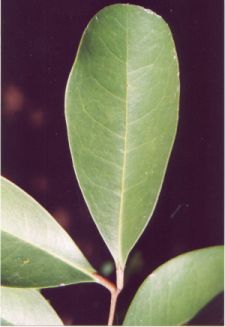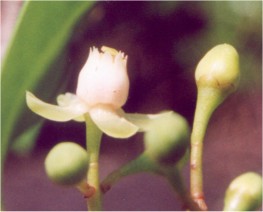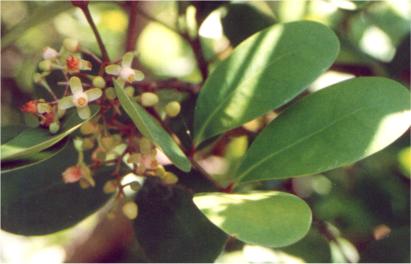
|
A field guide to Kenyan
mangroves
|
|
Xylocarpus granatum König 1784
Family: Meliaceae
Distribution
A wide distribution occuring from East-Africa to Polynesia. In Kenya, individuals
of Xylocarpus granatum ocuur sporadically over the forest, not grouped
into a zone. Although known from literature as occuring on the landward side,
some individuals in Kenya and Sri Lanka have been observed nearby the seaward
side. One of the two species of Xylocarpus occurring in Kenya; see also X.
moluccensis.
|
Leaves Root system Bark Flowers |
 |
 |
 |
Fruit
A big fruit ranging from the size of a big orange to larger, characterised by
a hard, lignified capsule, in which several seeds (up to 16, Tomlinson, 1986)
are enclosed.
References:
Tomlinson, P.B., 1986. The Botany of Mangroves. Cambridge University Press. Cambride Tropical Biology Series. 413 pp.